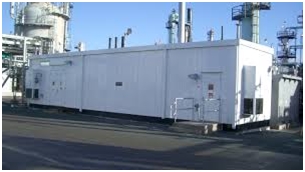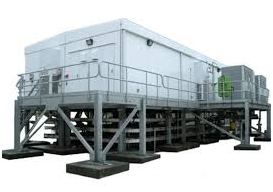Home › Electrical Engineering Forum › General Discussion › Power equipment centers: features, applications, and benefits
- This topic has 2 replies, 2 voices, and was last updated 9 years, 3 months ago by
Anonymous.
-
AuthorPosts
-
2015/10/26 at 10:10 am #11278
admin
KeymasterA PEC is essentially pre-fabricated modular power enclosure, housing all components necessary to distribute and control power. The following article by our member Marvin M. highlights the features, benefits and applications of PECs.
Enjoy and tell us what you think!
If you want to send us articles for them to be published on the blog, just contact us to this mail and we’ll discuss about it.
The need for compact equipment has permeated across all electrical equipment elements due to emerging technology and materials. Single components, and consequently complete power systems, continue to shrink, and occupy a smaller footprint.
One of the chief areas, of significant benefit to engineers, power distributors and consumers are the power equipment centers (PEC).Features
- A typical PEC consists of MV and LV switchgear, switchboards, transformers, batteries and relays, turbine control, and control centers, amongst others
- Design and manufacture as per international and local building codes. These codes include minimum design loads, electrical, structural and other building codes
- Supporting base, self-supporting and integrated unit
- Customization depending on applications: PECs for military use often blast proof materials while those meant for extreme condition areas feature reinforcements, corrosion resistance treatments, and snow loading amongst others.
- Electrical grounding provisions through buses, jumpers, and pads
- Heating, lighting and cooling systems
- Fire protection and plumbing features
Benefits
- Reduced maintenance costs due to the compact size, and optimized reliability and flexibility. Do note that the reduced exposure to the weather elements means less susceptibility to corrosion and physical damage. This reduces maintenance costs as well as downtime, thus promoting power supply reliability.
- Footprint: with space for large installations continually reducing due to growing population, engineers and designers seek smaller footprint for power systems. The primary benefit of the PEC is the compact size and flexibility. It allows for placement in areas otherwise too constricted for on-site power centers constructions. This comes in handy for applications such as projects in crowded urban areas, offshore platforms, mining and similar constricted spaces. The compact size also allows for stacking, thus vertical optimization.
- Integration and testing: common brick and mortar power systems usually take long to install, test and commission. Such delays may stall the progress of the main project such as power distribution, drilling and such. PECs are usually manufactured, assembled and tested at the factory: the complete unit is delivered, fully functional, at the area of use. This can help reduce on project downtime, as well as the need for the unnecessary labor force.
- A power system project is an amalgam of calculations, standards, and numerous testing. Optimizing the power system can be both time and resource intensive. With a PEC, however, all that is required is prior specifications to the manufacturer. They then deliver a unit optimized for the current use, as well as future expansions. The specifications part is especially important, as it ensures the provision of a power system that is compatible with the existing components and systems.
- One of the causes of major headaches for engineers is staggered delivery time for electrical components, especially when sourcing from different suppliers. This can take a toll on the project, as well as morale on the site. With PECs, however, the power system is shipped as a unit: this offer peace of mind and ease of project planning
Applications
- Waste Water treatment plants
- Industrial facilities, especially plants dealing with chemicals and hazardous solutions
- Offsite installations such as extreme weather condition installations
- Petroleum and mining industries
- Industries with global projects: the portability element allows for easy transport to the site, regardless of location
So what’s your opinion on this article? Leave us your comments.
2015/10/29 at 11:23 am #13736Anonymous
Guesti need a magazine of electrical engineering
2015/10/30 at 7:46 am #13737Anonymous
GuestJOSEPH NJAU, use Google for such a need :)
-
AuthorPosts
- You must be logged in to reply to this topic.
 A PEC is essentially pre-fabricated modular power enclosure, housing all components necessary to distribute and control power. The following article by our member Marvin M. highlights the features, benefits and applications of PECs.
A PEC is essentially pre-fabricated modular power enclosure, housing all components necessary to distribute and control power. The following article by our member Marvin M. highlights the features, benefits and applications of PECs.
